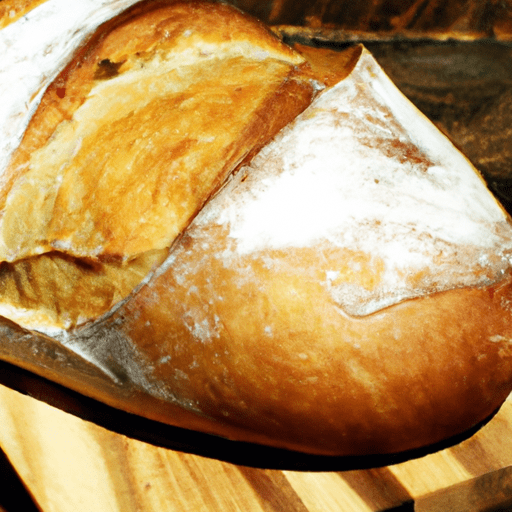The Perfect Gluten-Free French Loaf: A Delightful Twist
What could be more enticing than the aroma of freshly baked bread wafting through your kitchen, especially if you thought you could never enjoy a truly delicious gluten-free loaf? Introducing the gluten-free French loaf, a delightful twist that promises to satisfy even the most discerning bread connoisseurs while accommodating dietary restrictions. In this article, we will explore the taste, common uses, nutritional value, and fascinating history of this gluten-free delight.
The Taste: A Slice of Heaven
One may wonder if a gluten-free loaf can truly rival its traditional counterpart in taste and texture. Fear not, for this French loaf will surpass your wildest expectations! With a crust that boasts a satisfying golden brown hue and a soft, pillowy interior, every bite is a harmony of flavors. The bread carries a mild, slightly tangy taste, making it a versatile choice for a range of culinary applications.
Common Uses in Cooking: Versatility at Its Best
The gluten-free French loaf is incredibly versatile, lending itself to a myriad of culinary creations. First and foremost, it serves as the ideal base for a scrumptious sandwich. Slice it thick, layer it with your favorite fillings, and experience a taste sensation like no other. Additionally, this loaf can be transformed into delectable garlic bread or used as a vessel for mouthwatering bruschetta. The options are endless, limited only by your imagination.
Nutritional Value: Nourishing and Wholesome
Not only does this gluten-free French loaf tantalize your taste buds, but it also offers several nutritional benefits. Made with a combination of gluten-free flours such as rice flour, tapioca flour, and potato starch, this loaf is often enriched with essential vitamins and minerals. Additionally, many recipes incorporate wholesome ingredients like flaxseed, chia seeds, or even ancient grains, further boosting its nutritional profile. Packed with fiber and protein, it’s a smart choice for those looking to maintain a balanced diet.
History and Facts: Breaking Boundaries
Bread has played a significant role in French cuisine for centuries, and the gluten-free movement has brought about exciting innovations in the world of baking. Traditionally, French bread relies heavily on gluten to achieve its classic texture and structure. However, with an increasing number of people embracing gluten-free lifestyles, bakers have risen to the challenge, creating a gluten-free French loaf that pays homage to its traditional counterpart while breaking new boundaries.
Interestingly, the artistry behind baking a perfect gluten-free French loaf lies in the combination and proportions of alternative flours. Bakers have experimented tirelessly to achieve the ideal balance, ensuring the bread retains its characteristic crust and crumb, just with the absence of gluten. It’s a testament to human ingenuity and the commitment to inclusivity, making this bread a shared delight for all.
Conclusion
In conclusion, the gluten-free French loaf is a testament to the fact that dietary restrictions need not hinder our enjoyment of exceptional bread. With its heavenly taste, versatile applications, and impressive nutritional value, this loaf is a true game-changer. So go ahead, embark on a culinary adventure, and discover the joy of baking and savoring your very own gluten-free French loaf. Your taste buds will thank you!
Gluten-Free French Loaf
Origin: The origin of the French loaf can be traced back to France, where it has been a staple in traditional French cuisine for centuries. However, gluten-free French loaves are a more recent adaptation, developed to cater to individuals with gluten intolerance or those following a gluten-free diet.
Common Uses: Gluten-free French loaves are used in a similar manner to traditional French bread. They are often enjoyed on their own, sliced and used for sandwiches, or served alongside soups, stews, or salads. Due to their compatibility with various ingredients, they are versatile for both sweet and savory dishes.
Nutritional Benefits: Gluten-free French loaves are typically made from a combination of gluten-free flours like rice flour, tapioca flour, or potato starch. These flours are naturally low in fat, cholesterol-free, and can contribute to a good source of energy. However, nutritional benefits can vary depending on the specific recipe and ingredients used.
Unique Properties: One of the main challenges with creating gluten-free bread, including gluten-free French loaves, is achieving a similar texture to traditional wheat-based bread. Gluten, a protein found in wheat, is responsible for providing elasticity and structure to bread. In gluten-free loaves, alternative ingredients such as xanthan gum or psyllium husk powder are often used to mimic this elasticity.
Historical Significance: Gluten-free French loaves are a modern adaptation reflecting the increasing awareness and demand for gluten-free products. The development of gluten-free alternatives has allowed individuals with gluten intolerance or celiac disease to enjoy foods they may have previously avoided. This adaptation has contributed to a more inclusive culinary landscape.




Use the share button below if you liked it.
It makes me smile, when I see it.